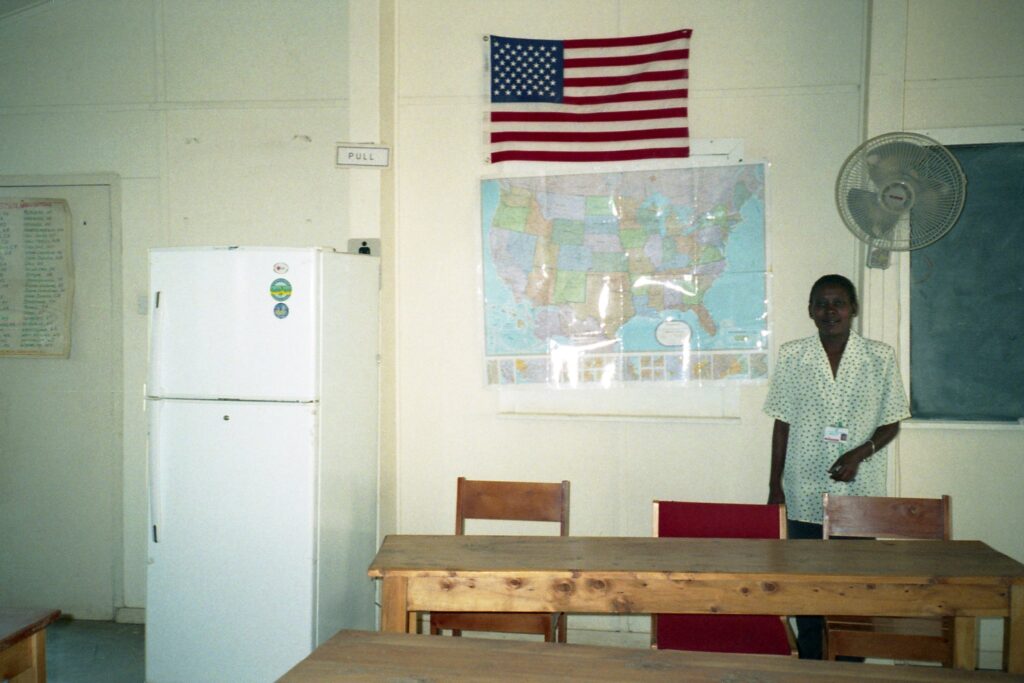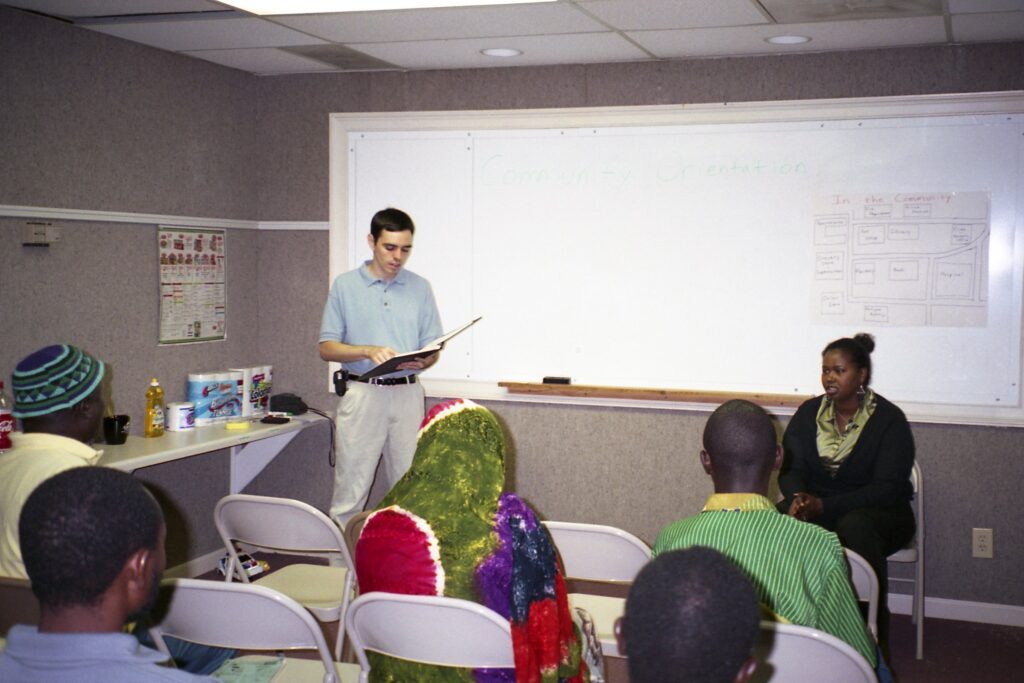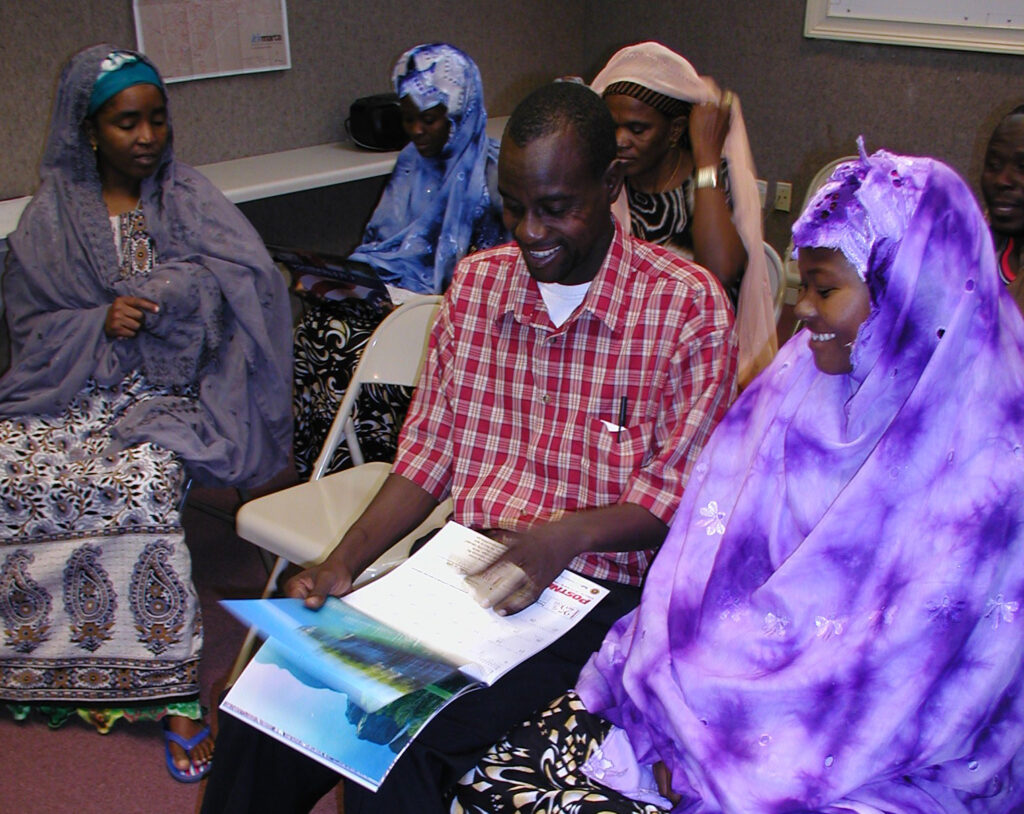Somali Bantu Refugee Resettlement:
From Kakuma to Atlanta
(2003-2005)
Menu
Learning Community
The gulf between the life the Somali Bantu knew in their own country and the life they would live in America was huge. A major focus of all refugee program efforts was providing cultural orientation, helping families learn about the practical, social, and behavioral norms they would encounter in their new lives. Cultural orientation classes would seek to teach everything from laws and
One of the main reasons I was sent to Kakuma was to learn about and offer advice for the cultural orientations there which sough to prepare refugees for the unfamiliarities of life in the US. We could then detail and improve our efforts for their arrival on our side as well and thus create a continuity in learning.


I am very proud of the collaborative community orientations that our organization helped create prior to the arrival of the Somali Bantu because it was the start of something that would become more standard in refugee practice as years went on, not to mention the focus for my career. Together with other refugee-serving agencies, we shared duties in teaching extended topics beyond the basic health and safety that all refugees received. In our classes, we focused on Community and Practical Skills.
